Four films and a novel this time. A breathtaking film (Heldin) about the workload of a nurse, two films (The Blue Trail and Familiar Touch) about aging, with or without disabilities, and finally a crazy film about a man with brain damage (El Jockey). And an encouragement to read Ian McEwan’s new novel (What We Know), because it deals with many topics, but especially the impact of dementia.
Here you will find the PDF of this episode of Scoop.
Film
Heldin, now showing in theaters
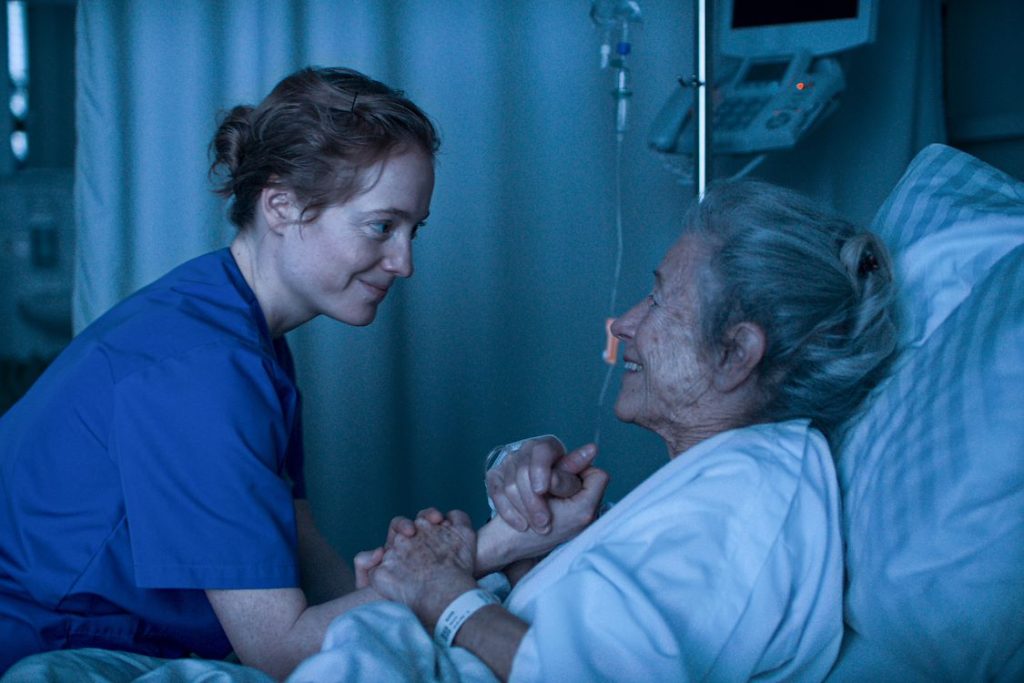
Nurse races against the clock
In her recent book Dit kost ons de zorg (This is what healthcare costs us), general practitioner and publicist Danka Stuijver tells the story of a nurse who comes to her office complaining that she “can’t take it anymore.” She is only in her mid-forties, but now that two of the eight permanent colleagues with whom she had to fill the gaps in the schedule have left the healthcare sector, she has had enough. She can’t do it anymore. Stuijver writes that she is not so much shocked by her words as by the resigned tone in which the nurse speaks: ‘She no longer has any hope for improvement. ‘
Her story is one of many, according to Stuijver, and it wouldn’t take much for Floria, the nurse we follow in Heldin by Petra Volpe, to become one of them. Despite the understaffing of her late shift, Floria does her job professionally and with dedication. She is professional, juggles many tasks, and is concerned with the ups and downs of her 26 patients, such as the old man who anxiously awaits his diagnosis while the doctor in charge is too busy to report in, the difficult sons of a terminally ill woman, and a young mother who has cancer. And then there is also an insecure intern and a haughty, unhappy but terminally ill patient with private insurance (we are in Switzerland) who initially gets on Floria’s nerves with his futile wishes.
Floria’s routine, which is hectic enough in itself, is constantly interrupted by matters that require her urgent attention. As her shift progresses, her work increasingly becomes a race against the clock, and in the meantime she struggles with the fact that she neglects the patients who bother her the least. Someone dies, and she initially overlooks an allergic reaction to incorrect medication. Fortunately, things also go well, such as her touching conversation with the terminally ill mother. The hectic pace culminates in a brief outburst of anger when the demanding terminally ill man becomes too much for her: she throws his expensive watch out of the window. Later, she tries to find the watch in the bushes, as if she were searching for ‘lost time’ – a perhaps overly symbolic action in a film that relies primarily on reality rather than metaphors. Because the level of realism is high: in preparation, filmmaker Petra Volpe shadowed nurses in various Swiss hospitals and also enlisted a nursing specialist as an advisor. Lead actress Leonie Benesch even did an internship in a hospital.
In long, often uninterrupted shots, we follow Floria as she does her thousand and one tasks. Only afterwards does the viewer realize that Heroine lasted only an hour and a half, while her shift obviously took many more hours. With this, Leonie Benesch—the film is consistently told from her perspective, so she can be seen in every scene—and writer/director Petra Volpe deliver a major achievement.
The closing credits of this film emphasize that the shortage of nursing staff is a global problem and will only get worse. By 2030, Switzerland will be short
30,000 nurses, and according to the WHO, the global shortage will be as high as 13 million.
Henk Maassen
Film
The Blue Trail, now in theaters, and from October 2 also available on picl.nl
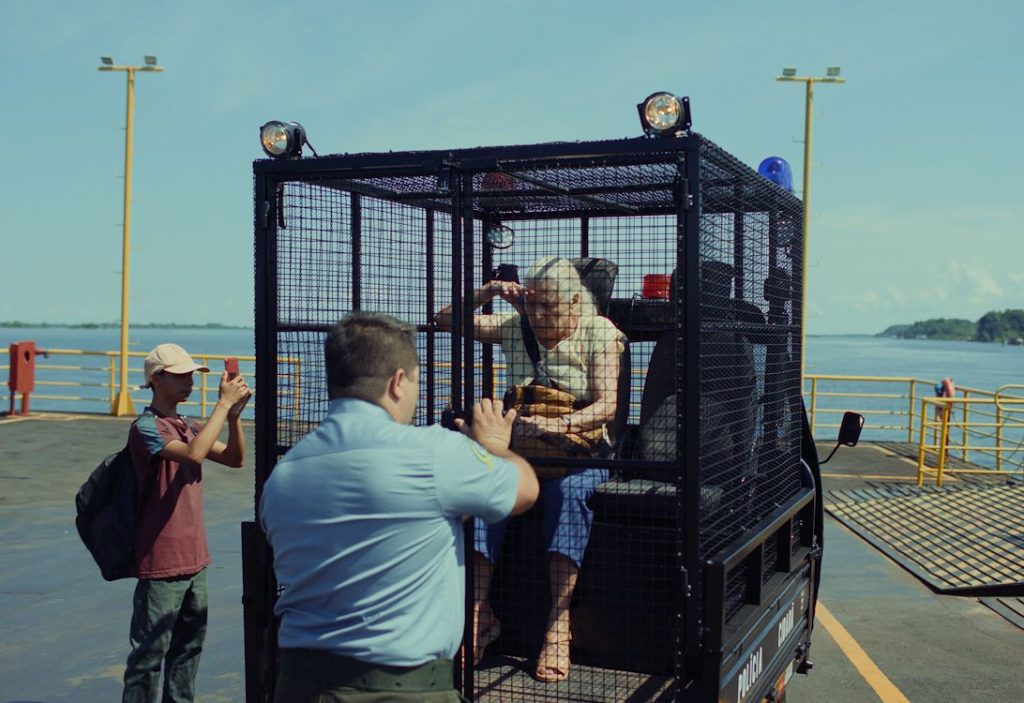
Familiar Touch, in theaters from September 25
The coming of old age film: a new genre?
Two recent films shed new light on the experience of aging, each in its own way. While Gabriel Mascaro’s Brazilian film The Blue Trail focuses on the struggle for autonomy, Sarah Friedland’s American film Familiar Touch opts for an intimate exploration of dementia from the perspective of the main character. Both films break with conventional storylines and approach old age, with or without its shortcomings, as a rite of passage, comparable to coming of age.
The Blue Trail centers on Tereza, a 77-year-old woman from an industrial town on the edge of the Amazon region. She works as a cleaner in a crocodile slaughterhouse. But as a person over 75, the state claims her house, she is awarded a medal as ‘national heritage’, assigned a guardian—her daughter, who has no time for her—and put on a bus to a ‘senior colony’ with a backpack and an incontinence diaper, which she refuses to wear. These colonies are intended to allow the elderly to ‘enjoy’ their final years in a secluded place, so that the younger generation can focus entirely on growth and productivity. Those who refuse are tracked down and taken away in cages.
However, Tereza decides not to accept this imposed final phase of life and embarks on a clandestine boat trip through the Amazon, which turns out to be a journey full of obstacles, encounters, and discoveries. For her, there will be no “social euthanasia,” as director Mascaro called it in an interview.
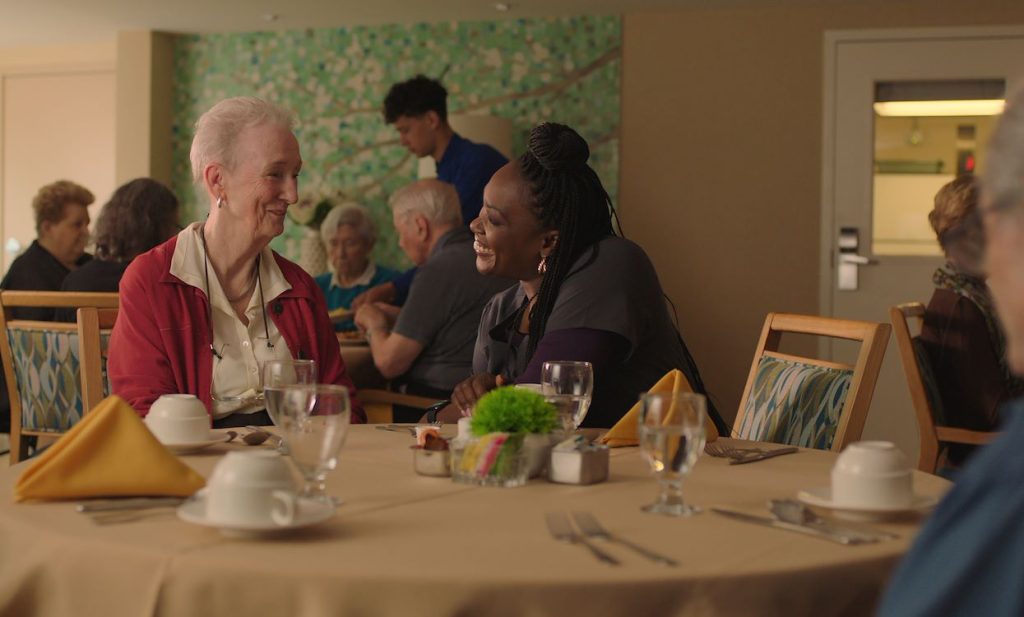
In Familiar Touch by Sarah Friedland, Ruth, who is over 80, leads a seemingly quiet life, but her memory is increasingly failing her. She makes small mistakes in her daily routine. When she confuses her son with an admirer, it marks the beginning of an irreversible change. When Ruth ends up in a nursing home—a decision she cannot remember making—she feels lost among the other residents. She doesn’t belong there, she thinks.
What both films share is that the stories of Tereza and Ruth (both played by wonderful actresses) are not told through the eyes of children, partners, or caregivers, but show how both women themselves experience what it is like to grow older. The Blue Trail does this through an adventurous, unpredictable, and visually appealing journey through the Amazon region; Familiar Touch through a tranquil but equally transformative inner journey, in equally beautifully composed shots.
Both filmmakers thus refer explicitly to the coming-of-age genre. Just as adolescents form their identities, Ruth and Tereza must reorient themselves to a changing reality, shake off their social roles, and find a new balance. Sometimes playful and cheerful, sometimes with heartache and sadness.
Henk Maassen
Novel
What Can We Know, Ian McEwan. London: Jonathan Cape, 2025.
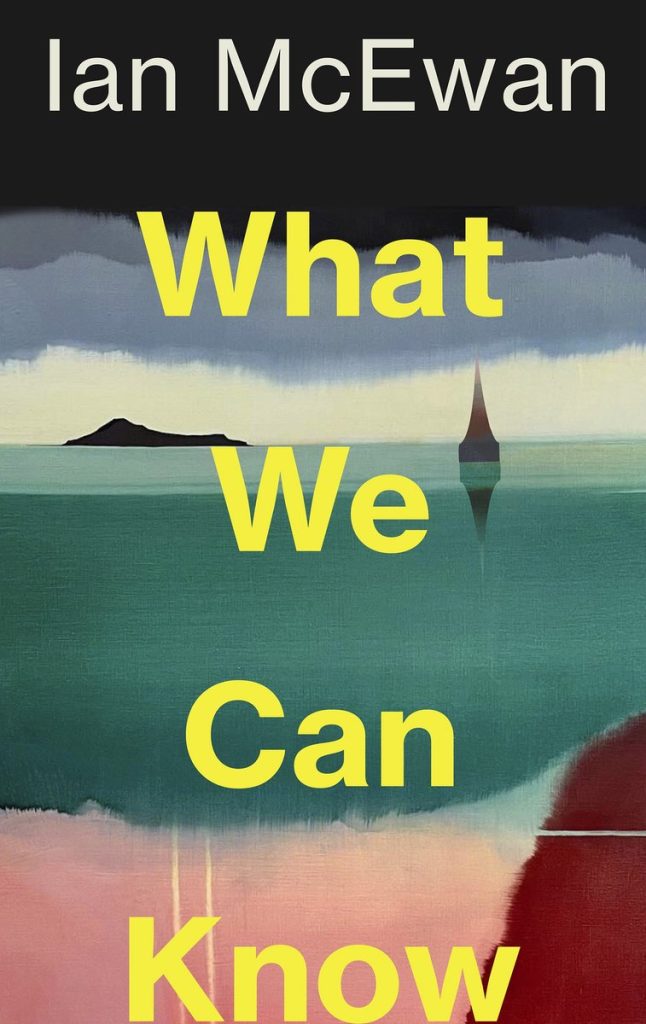
The impact of dementia
Much has already been written about What We Can Know by Ian McEwan; the book is on the bestseller list, so why focus on it here? Quite simply because it is also, or perhaps even primarily, a book about the impact of dementia. It begins as a quest in the year 2119 to find a long-lost but now legendary poem by the renowned Francis Blundy, which he recited during a dinner in 2014 for the 54th birthday of his wife Vivien. Before Vivien had an affair with Blundy, she was married to the violin maker Percy Greene, who developed early Alzheimer’s. He died shortly before he was to be admitted to a nursing home.
Clever, as we have come to expect from McEwan, he intertwines a whole series of motifs – although not always very tightly, but so be it. Such as the decline of the climate: in 2119, the world is in chaos. England is an archipelago, cities have sunk, the global economy has collapsed. But also: the shrinking field of the humanities, the problematic nature of biography and, in light of that, the biographical interpretation of art, and more generally: the relationship between memory and truth, and that between art and reality. The latter is beautifully illustrated in the contrast between the intellectual poet Francis Blundy, who has no interest in nature, and the tough craftsman Percy Greene (what’s in a name), who takes pleasure in manual labor and his knowledge of nature: a “nature man,” a man of integrity. Here, we recognize the contrast from McEwan’s earlier novel Saturday between the neurosurgeon Henry Perowne, who has no need for literature and imagination to know anything meaningful about the human condition, and his father-in-law, the great poet John Grammaticus (again: what’s in a name).
In a short, almost casual passage in What We Know, we read that the imagined is stronger than the factual: ‘The characters we cherish in literature do not really exist. As individuals or countries, we embellish our history so that we come across better than we really are. We live our lives based on assumptions that are not further investigated or contradicted and populate a nebula of dreams that we seem to need.’
This will prove to be a crucial statement, because that ‘mist of dreams’ is dispelled in the second part of the book. It would be a shame to reveal the how and why here, as it would be a spoiler. But the main thing is that this brings another important theme to light: steadfast love in times of mental decline. “Watching the person you love gradually succumb to merciless disintegration should have been both dark and grand, even dramatic. But the daily reality of the decline consisted of its banalities.” The way in which McEwan then gives words, or rather substance, to Vivien’s great love for Percy is unparalleled.
Henk Maassen
Film
El Jockey, now showing in theaters and via picl.nl
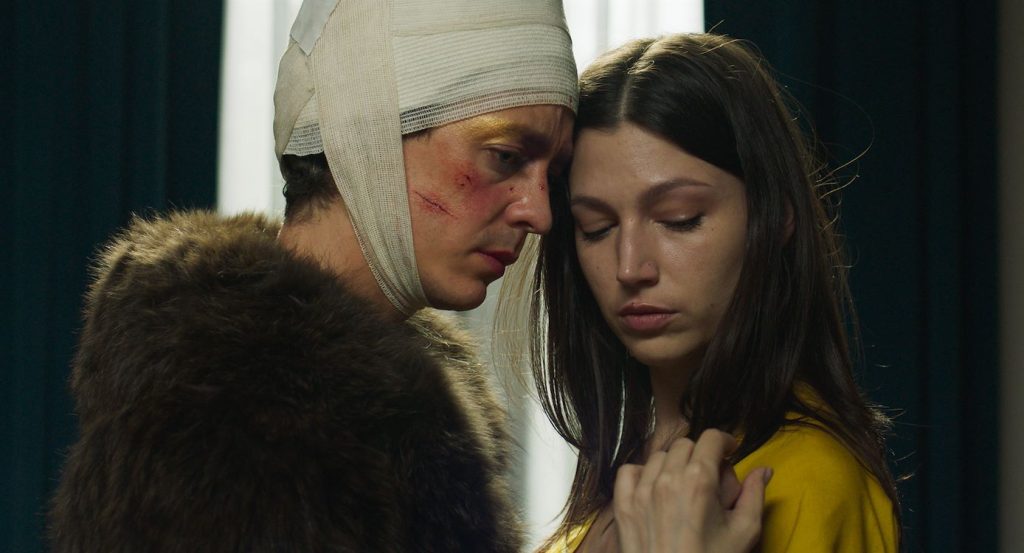
How a blow to the head changes the world
It quickly becomes clear that El Jockey is no ordinary film. The opening scene, a café populated by men who all have serious physical disabilities, immediately sets the absurdist tone. Later, we see how jockeys prepare for a horse race by performing a kind of dance. And the abrupt way in which scenes follow each other is also quite unsettling, especially at first.
The story, insofar as there is one: Remo Manfredini was once a successful jockey, but his self-destructive behavior led him astray. Now he races mainly to pay off his sky-high debts to a criminal gang led by a shady mafia boss, who, incidentally, always carries a baby with him whenever he is on screen—yet another unsettling detail. During the most important race of his life, things go wrong: Remo causes a tragic accident in which one of the most valuable horses is killed. He himself is seriously injured in the head.
The attending neurologist has bad news: recovery is impossible, Remo will have to learn to live with severe limitations. But Remo, who is anything but himself, doesn’t care, steals a patient’s fur coat and handbag, leaves the hospital, and wanders the streets, no longer sure who he is or was. “His injury seems to have left him lost in space and time,” suggests a police officer who is following him via the city’s security cameras. When Remo steps on a scale at a drugstore, he weighs exactly 1 gram… Are we wandering around in his comatose mind? What or who is he actually: woman, man, ghost? Has he ended up in a kind of purgatory?
Creator Luis Ortega has said: “One day we wake up and we are a man. Another day we wake up and we are a woman. Another day, a child. (…) But the real challenge for my main character is not to go crazy.”
That may also apply to the viewer. But anyone with a sense of the absurd, the magical-realistic, and the fantastic, all told with a kind of deadpan humor, will have a fun evening. What is it ultimately about? Well, can you ever know with a surrealist?
Henk Maassen